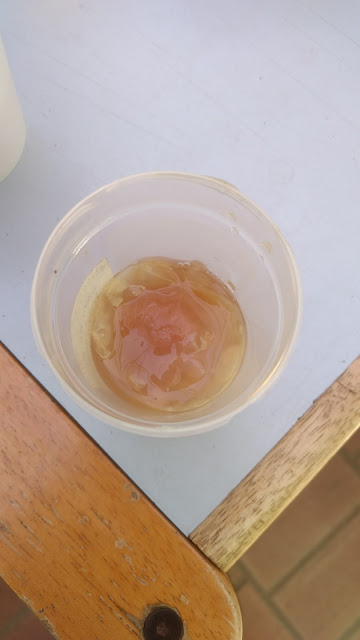Baby Booch - Brewing Kombucha
Fermentation has been an ingenious preservation and transformation hack in the world of food for centuries, probably millennia now. But it seems that people are rediscovering excitement for the magical ways of the fermentation of late. There is some really interesting experimental work in the science and art of fermented foods taking place in India right now, with beers, ciders, cheeses, sourdough breads, and who knows what other cool things!
One such cool thing is Kombucha. I’d heard about Kombucha, a while back, and read about it, watched videos on how to make it, even asked a bunch of brewers a lot of questions about it. But never actually made it – until today.
Kombucha, is a fermented beverage made of tea, with it’s origins speculated to be in ancient China. It is full of probiotic microbes, and tastes weirdly delicious. It is made by introducing a very interesting creature to a pot of cool sweeted tea – that creature is called a SCOBY.
A SCOBY is not actually a singular creature, but rather an entire colony of bacteria and yeast that grow in disc-like structures on the surface of the tea, feeding on the sugar added to it, producing a weak alcohol.
The name SCOBY is not just a whimsical nickname, but in fact it is an acronym for Symbiotic Colony Of Bacteria and Yeast. These microbes feed on the sugars, oxidising them into alcohol through the process of fermentation. If left for long enough, the alcohol will eventually turn into sour vinegar.
When I first grew curious about this drink, SCOBYs seemed very hard to come by. You had to know someone who made kombucha, and ask them to share a pice of their culture. At the time, some friends had told me of a few brewers making it in Bombay and Chennai.
Since then, I’ve been seeing and hearing so much more about it, until today, when I finally made a batch of kombucha myself.
 |
| All the ingredients for Kombucha |
This morning, I visited the Art Science Blr lab at Srishti School of Art Design and Technology and met Dholy, bartender-turned experimental ferment-nerd from Jogja, Indonesia. It was an interesting morning, because Dholy has been brewing kombucha and other fermented herbal drinks for two years now, without having delved much into the scientific theory of the fermentation process. He works more by look, feel, taste, temperature and intuition. And I, on the other hand, have never brewed kombucha before but have googled the heck out of the science of it. And with us were also the artists and designers from the Art Science lab.
 |
| Fresh batch of booch - spot the baby SCOBY! |
We spent the morning brewing and tossing up ideas of kombucha pani puri, spiced kombucha drinks inspired by Leche de Tigre and whatnot! We even discussed the scope for vegan leather -- if grown in large vats to a big enough size, the SCOBY can be removed, dried and compressed to make a vegan substitute for leather!
 |
| A layer of SCOBY cellulose, which can be used to make vegan leather! |
From some of Dholy's other samples i saw a pomegranate Kombucha that had gone bad - growing fungus that created toxins. I constantly asked if there is a correct way or a strict recipe to make it. He insisted -- don't be so rigid, it's okay! Be free, just open it, taste it and go with what you feel! While it is important to be sterile and clean so that no toxin producing moulds grow in the drinks, I think I often tend to forget that just like with yeasted bread, this too is a living thing, and needs the human element of intuition.
It was an interesting morning where science, art and food converged.


Comments
Post a Comment
Would love to hear your thoughts :)